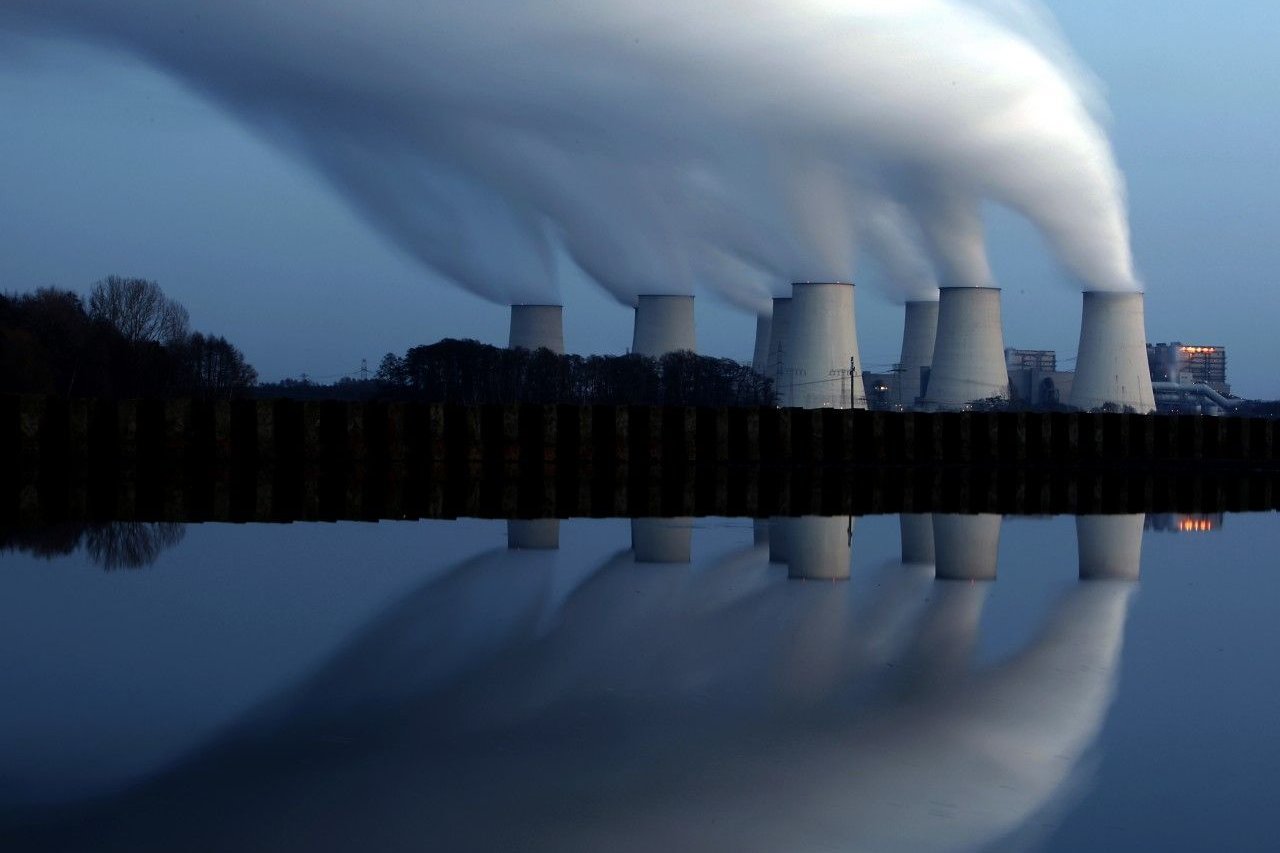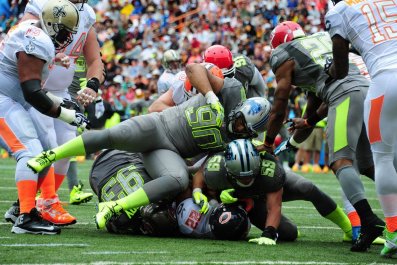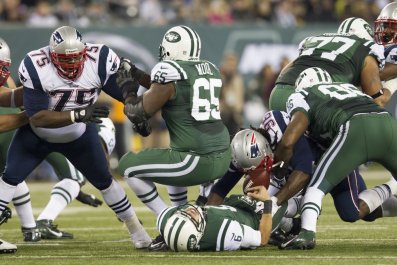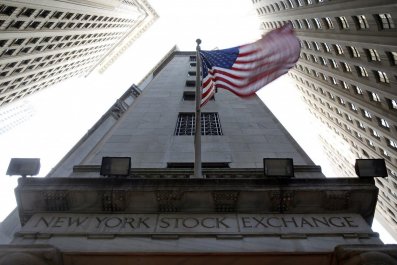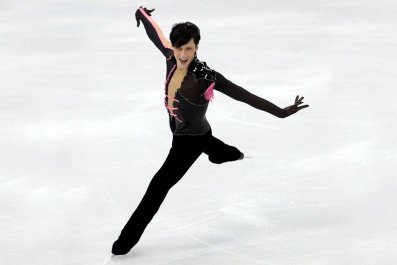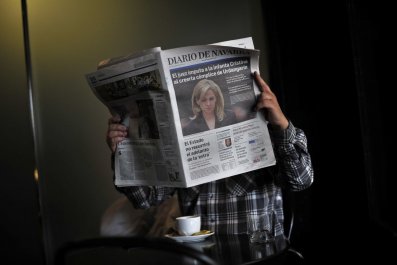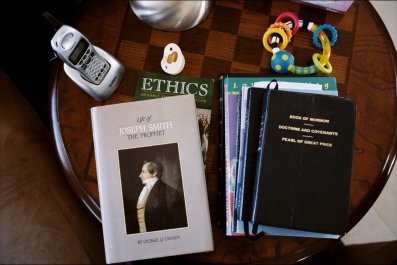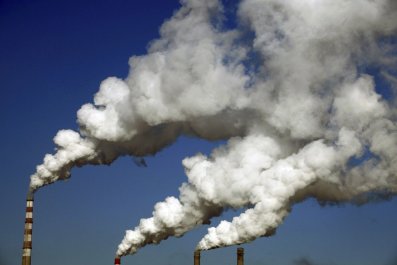For years, the tiresome back-and-forth has played on like a broken record. Scientists announce new data showing that the global climate is warming, creating potentially devastating changes in the world. Skeptics attack, proclaiming the researchers are lying as part of a conspiracy to gin up research funding. The climatologists respond, calling the detractors anti-science deniers who push their claims at the behest of fossil-fuel companies that stand to lose the most if the research is accepted as fact. And round and round it goes, with no end in sight.
That is, until maybe now, with the spinning potentially coming to a stop in the most unlikely of places - a Washington, D.C. courtroom. There, a little-noticed lawsuit filed by one of the world's preeminent climatologists against a premiere conservative publication and a conservative think tank is moving forward, and both sides - absent dismissal or settlement - will have to put up or shut up.
The suit filed by Michael Mann, director of the Earth System Science Center at Pennsylvania State University, claims that the National Review and the Competitive Enterprise Institute (CEI) libeled him in a pair of articles in which they stated he had manipulated climate data and that the fraud had been covered up by his employer, which said its investigation concluded he had done nothing wrong. To make the point, the CEI writer, Rand Simberg, drew a comparison between Penn State's handling of abuse allegations against Jerry Sandusky - the university's longtime assistant football coach convicted as a child molester - and its review of Mann's work.
"Mann could be said to be the Jerry Sandusky of climate science, except that instead of molesting children, he has molested and tortured data," Simberg wrote in the article Mann says is libelous.
Mark Steyn, a writer with National Review Online, wrote about the Simberg article and tossed in his own thoughts. While at first openly shying away from the Sandusky metaphor, Steyn called some of Mann's most prominent work "fraudulent" - a graph of historical temperatures showing rapid rises in modern times, which is widely known as the "hockey stick." Then Steyn returned to the references to the child molester.
"Graham Spanier, the Penn State president forced to resign over Sandusky, was the same [person] who investigated Mann," Steyn wrote. "And, as with Sandusky...the college declined to find one of its star names guilty of any wrongdoing." He went on to say that the investigation "was a joke."
Ugly stuff. Accusations of scientific fraud, lies, cover-ups and then comparisons with some of the most horrific crimes imaginable. Because of the prominence of his research in climate change science, similar - though rarely so caustic - attacks had been leveled at Mann for years by skeptics. But circumstances had changed. Not only had the two writers gone further than most by creating an equivalence between Mann and an infamous child molester, but they appear to have done so at the worst possible time.
For months before those articles, Mann and other climatologists had been speaking among themselves about the need to start fighting back against the attacks on their work and their character. The science is on their side, they argue, and by not responding aggressively against the skeptics, they have allowed the discussion to become derailed. And if critics have slandered or libeled them, they shouldn't stand for it.
"If we don't step up to the plate, we leave a vacuum [for] those with an ax to grind," Mann says, while cautioning that he would not specifically address the lawsuit. Mann has no doubt some critics are advancing their positions honestly, but he believes that responding to bad-faith attacks on climatologists and their work is "a call to arms to our fellow scientists. We should not apologize for trying to inform that discussion."
Before filing his suit, Mann told both CEI and National Review that he would take action if they didn't remove the offending statements and apologize. While CEI edited some of the more aggressive words out of Simberg's online piece, National Review practically sneered. In a piece headlined "Get Lost," the magazine's editor, Rich Lowry, dismissed Mann's warning, labeled any litigation as nothing more than a nuisance and all but invited the climatologist to sue by declaring the magazine would use the discovery process to investigate and write about him. Lowry also asked readers to contribute money to help finance any legal battle.
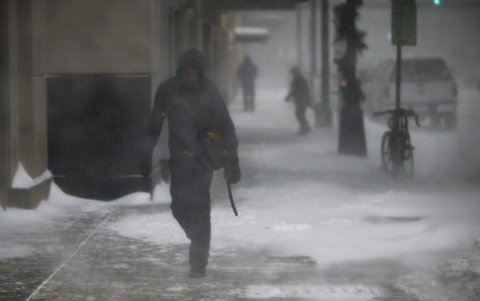
How did things get to this point? There are plenty of possible starting points, since the dispute between climatologists and skeptics has been ongoing for almost 20 years. But probably the most relevant event is the "Climate-gate scandal," which has been frequently cited by skeptics as proof that global warming is a fraud. In 2009, a still unknown hacker took thousands of private emails between climatologists and released 20 of them. The climate skeptics seized upon those documents as proof that scientists were cooking their research results.
The email held up as the most damning was from 1999, which, in regard to Mann, made reference to "Mike's Nature trick," and used the words "hide the decline" in reference to something one of the scientists was preparing that compared different means of reconstructing historical temperatures through proxies like tree rings. This, the skeptics claimed, showed that Mann had devised a dishonest way to disguise historically falling temperatures. They demanded investigations of Mann and the other climatologists on the emails to prove their research was part of a fraudulent scheme to fool the world into believing in climate change.
While those accusations were blared across television and newspapers, the scientists countered that the skeptics were cherry-picking words, misrepresenting them and ignoring the scientific meaning of what was being said. At the most basic level, the scientists said, a 10-year-old email, regarding a single piece of information being prepared for one group - the World Meteorological Organization - was hardly proof of a conspiracy.
"The email was written at the end of the warmest month of the warmest year on record," Mann says. "It got contorted illogically, in a way that makes no sense at all until you understand the context."
While "trick" and "hide the decline" were often cited by skeptics as being related, they were in fact referring to two different things, Mann said. The "Nature trick" referred to a means of comparing two data sets on a single graph, which Mann and other scientists had used in 1998 for an article in Nature magazine, he says. In reconstructing temperatures, one of the proxy models for charting them did not extend past the early 1980s, Mann explains, so the reviewers of the article asked for the climatologists to add instrumental temperatures for the two decades that followed - in other words, two different means were used to plot historic temperatures. The separate curves were labeled, and the data for both could be downloaded by anyone who wanted to review them.
The words "hide the decline" had nothing to do with temperature, Mann says. The use of tree ring data as a proxy for temperature reconstruction was known to be useful only up to the 1960s, when the density of tree rings dropped in response to warming temperatures. In other words, the email wasn't discussing declines in temperatures, but declines in tree ring growth. The divergence between tree ring data and temperature could not be explained, although some scientists theorized it had something to do with pollution. But it was no secret - it has been publicly discussed in peer-reviewed science journals since 1995. Either way, the decline in tree ring density compromised the quality of it as a proxy for temperature; the "hiding" phrase, while inartful, was referring to not displaying tree ring data over years when it was known to be misleading, Mann says.
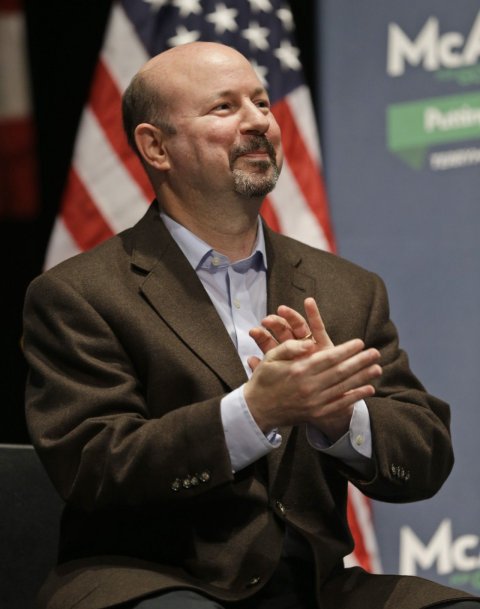
The skeptics have dismissed these explanations as hokum, and argue that the email speaks for itself, proving climate science showing warming is based on manipulated data. But multiple investigations - at Penn State, the University of East Anglia, the United Kingdom's House of Commons Science and Technology Committee, the U.K. Secretary of State for Energy and Climate Change, the Environmental Protection Agency (EPA), the National Academy of Science - have independently concluded that there was no basis for claims that the emails show Mann and the other climatologists had engaged in misconduct or fudged the data. The decline was about tree rings; the trick was about a publicly revealed technique used in Nature. Moreover, in 2010, CEI filed a request to the EPA calling for reconsideration on some of its findings, citing in part the emails. The EPA responded by brushing aside the allegations: the emails among the climatologists "do not show either that the science is flawed or the scientific process has been compromised." The agency added that it had investigated the emails "and found no indication of improper data manipulation or misrepresentation of the results."
Which leads back to the court case between Mann, CEI and National Review. In the articles, Mann says in his lawsuit, the think tank and the publication ignored more than half a dozen investigations that found no scientific wrongdoing, focusing almost exclusively on the Penn State inquiry in order to call him a fraud. CEI also mentioned the National Academy of Science's investigation, but dismissed those findings by saying the body had obtained information from Penn State, meaning the inquiry was "not truly independent." The basis mentioned by CEI to call the Penn State investigation a whitewash was stating it had only interviewed Mann, and "seemingly ignored the content of the emails."
After Mann filed his lawsuit, the defendants attempted to have it thrown out, stating that the accusations were merely opinion and hyperbole protected under the First Amendment, and that the climatologist failed to allege anyone acted with actual malice. What followed was a procedural train wreck, resulting in an order rejecting the motion to dismiss, an appeal of the order, a reversal and, this month, a new order from a new judge refusing to toss out Mann's suit. That new order has been appealed by CEI and Simberg; if the court refuses to reverse, the next step would be discovery and then the filing by the defendants of a summary judgment motion with the lower court seeking dismissal before trial.
While some of the defendants or their representatives declined interviews or did not respond to emails, those who did speak expressed confidence that they would prevail. The statements in the CEI article "are fully protected speech under the First Amendment and will likely be treated as such by the Court of Appeals," said Andrew Grossman of BakerHostetler, who represents the think tank and Simberg. Anthony Dick, a lawyer with Jones Day, which represents National Review, declined to comment. Steyn, the author of the original National Review piece, said by email, "I stand by everything I wrote, and I'm happy to defend it in court and before a jury - if it comes to that."
There have been signs, however, of discord among the defendants. National Review recently switched law firms to Jones Day, while Steyn is now representing himself after a dispute over strategy.
In an email and on his website, Steyn expressed frustration that National Review refuses to take on Mann directly, in court, rather than spending so much money on legal maneuvering to keep the case from going to trial. "You can't win a free speech battle if you're not prepared to fight it, and I don't think I'm giving anything away when I say that the silence of NR's editorial team (the only guy over there who ever writes anything is the publisher) has been very dispiriting," Steyn said by email.
Steyn also said - as did his co-defendants in court filings - that the investigations of Climate-gate didn't back up Mann's conclusions, and he was legitimately questioning the science behind the climatologist's work. "He's suing me for calling his hockey stick 'fraudulent' ", Steyn said by email. "Which it is."
Mann says he is frustrated about the bitterness of the years of disputes between climatologists and the skeptics but now accepts that responding to attacks will be part of the job for all of them.
"A lot of us would much rather be spending our time doing science, but an increasingly large amount of our time is spent on defending ourselves against bad-faith attacks," he says. "Over time, I have come to embrace that."



